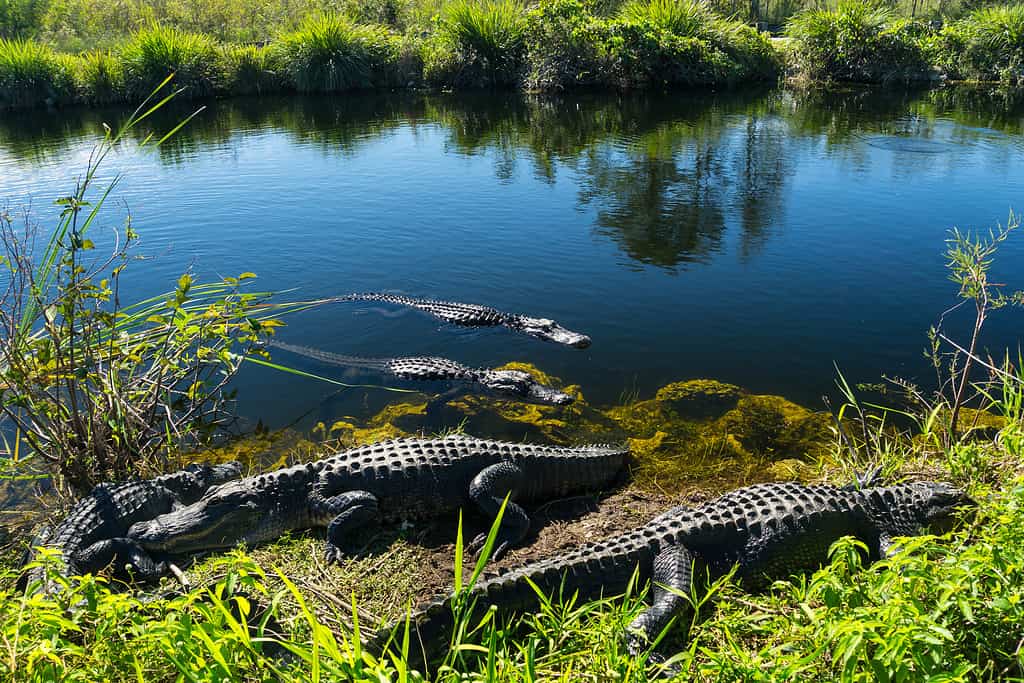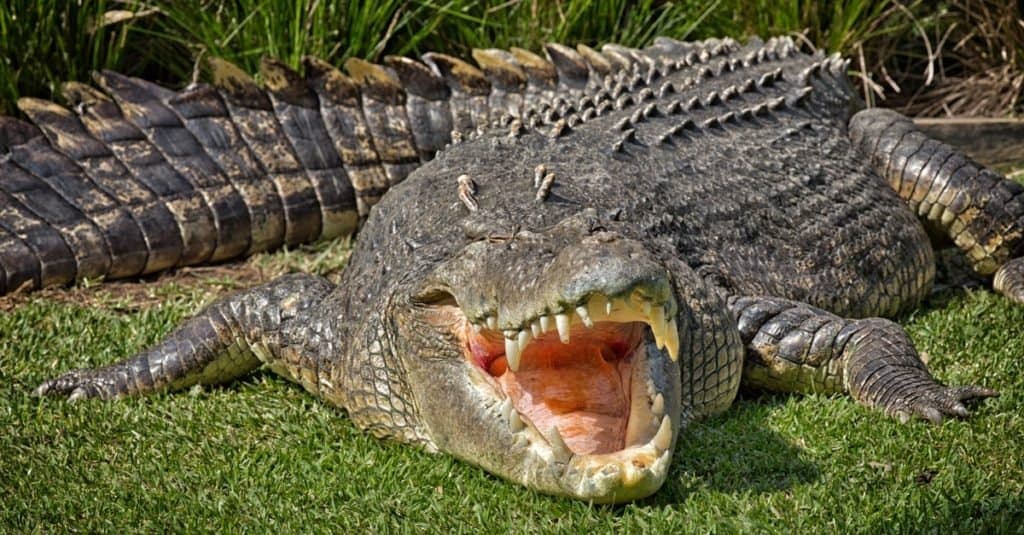Australia is famous for its native wildlife, including some iconic species of reptiles. But are there any true alligators native to Australia? Read on to find out!
How Are Crocodilians Classified?

Crocodilians generally provide a high level of parental care to their young, an unusual behavior amongst non-avian reptiles.
©Marc Pletcher/Shutterstock.com
Crocodilians are reptiles of the order Crocodilia. Scientists split this order into two crown groups: the Alligatoridae family, further divided into the Alligatorinae (alligators) and Caimaninae (caimans) subfamilies, and the Longirostres clade, further divided into the Crocodylidae (true crocodiles) and Gavialidae (gharial and tomistoma) families.
How Many Species of Alligators Are There and Where Do They Live?

Though once listed as an endangered species, thanks to conservation efforts, the American alligator is now fully recovered and enjoys healthy population numbers across much of its historic range.
©Simon Dux/iStock via Getty Images
There are only two living species of alligators in the world. These are the American alligator (Alligator mississippiensis) and the Chinese alligator (Alligator sinensis). As their names suggest, these species are respectively confined to the United States and China. The American Alligator ranges widely across the Southeastern United States. While the Chinese alligator historically was also widely distributed across the lower Yangtze River system in southeastern China, today it persists in just a tiny area of the Anhui province, with fewer than 100 adults left in the wild. As such, the IUCN Red List currently lists the species as Critically Endangered.
What Crocodilians Live in Australia?

The huge “saltie” is an iconic Australian animal.
©PomInOz/Shutterstock.com
While there are no alligators native to Australia, there are two crocodiles. These are the freshwater crocodile (Crocodylus johnstoni), aka the “freshie,” and the saltwater crocodile aka estuarine crocodile (Crocodylus porosus), aka the “saltie.” The smaller freshwater crocodile is endemic to northern Australia, where it lives in rivers, creeks, pools, billabongs, lagoons, and swamps. The larger saltwater crocodile ranges across Southeast Asia and northern Australasia. In Australia, it is found in northern coastal areas and drainages, as well as several offshore islands. The saltwater crocodile is also the world’s largest living reptile. An adult male can grow to over 6 m (20 ft) and weigh over 1,500 kg (3,300 lb)!
Conclusion: No Australian Alligators, Just Crocodiles

Don’t call me an alligator, I’m an Australian freshwater crocodile!
©AlizadaStudios/iStock via Getty Images
Living crocodilian reptiles are classified into four main types: alligators, caimans, crocodiles, and gavialids (gharial and tomistoma). There are only two species of alligators, neither native to Australia. Rather, Australia has two species of true crocodiles. These are the freshwater crocodile, endemic to Australia, and the saltwater crocodile, also the world’s largest living reptile.
The photo featured at the top of this post is © Kirsty Nadine/Shutterstock.com
Thank you for reading! Have some feedback for us? Contact the AZ Animals editorial team.







